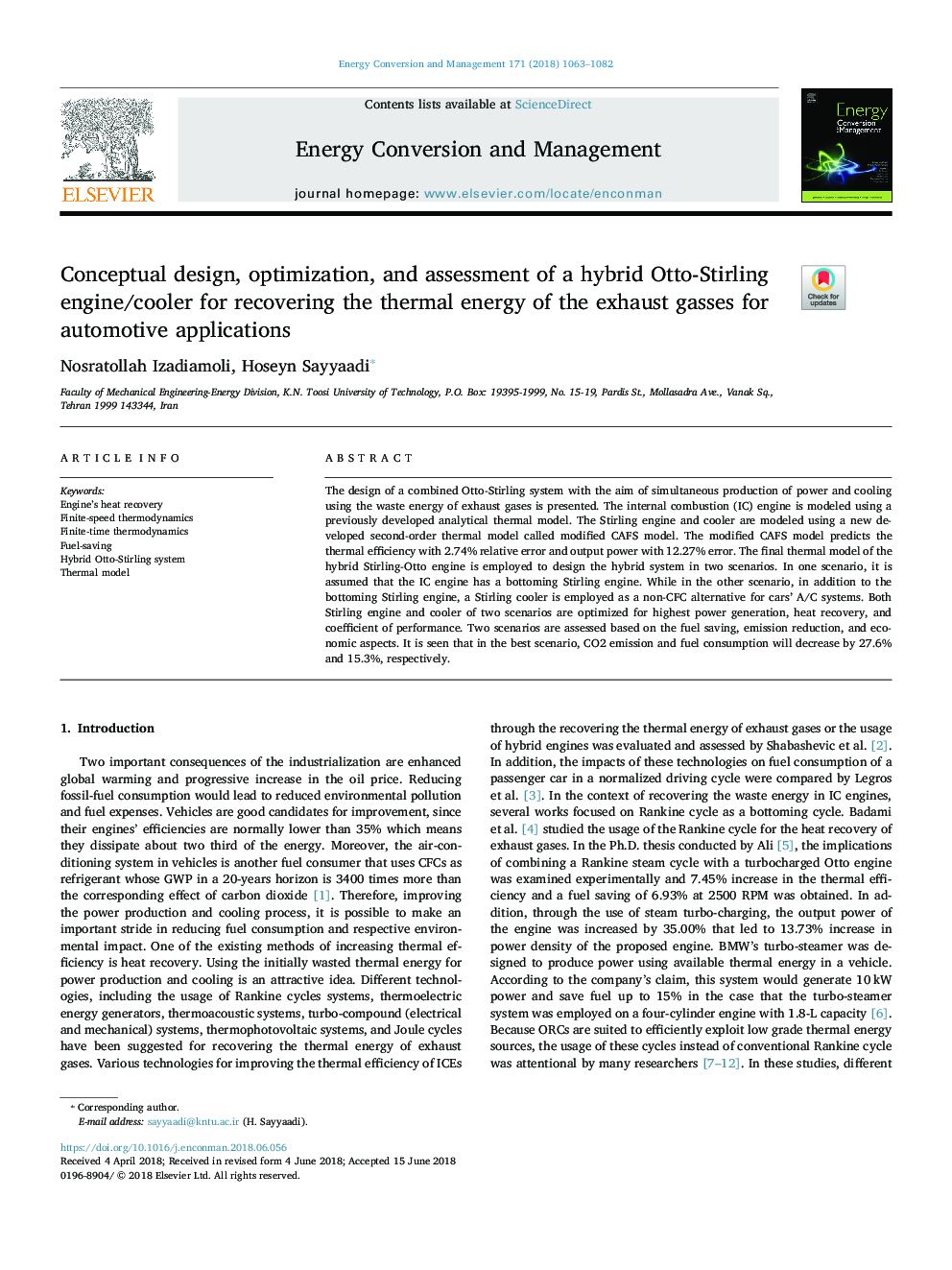| Article ID | Journal | Published Year | Pages | File Type |
|---|---|---|---|---|
| 7158090 | Energy Conversion and Management | 2018 | 20 Pages |
Abstract
The design of a combined Otto-Stirling system with the aim of simultaneous production of power and cooling using the waste energy of exhaust gases is presented. The internal combustion (IC) engine is modeled using a previously developed analytical thermal model. The Stirling engine and cooler are modeled using a new developed second-order thermal model called modified CAFS model. The modified CAFS model predicts the thermal efficiency with 2.74% relative error and output power with 12.27% error. The final thermal model of the hybrid Stirling-Otto engine is employed to design the hybrid system in two scenarios. In one scenario, it is assumed that the IC engine has a bottoming Stirling engine. While in the other scenario, in addition to the bottoming Stirling engine, a Stirling cooler is employed as a non-CFC alternative for cars' A/C systems. Both Stirling engine and cooler of two scenarios are optimized for highest power generation, heat recovery, and coefficient of performance. Two scenarios are assessed based on the fuel saving, emission reduction, and economic aspects. It is seen that in the best scenario, CO2 emission and fuel consumption will decrease by 27.6% and 15.3%, respectively.
Related Topics
Physical Sciences and Engineering
Energy
Energy (General)
Authors
Nosratollah Izadiamoli, Hoseyn Sayyaadi,
